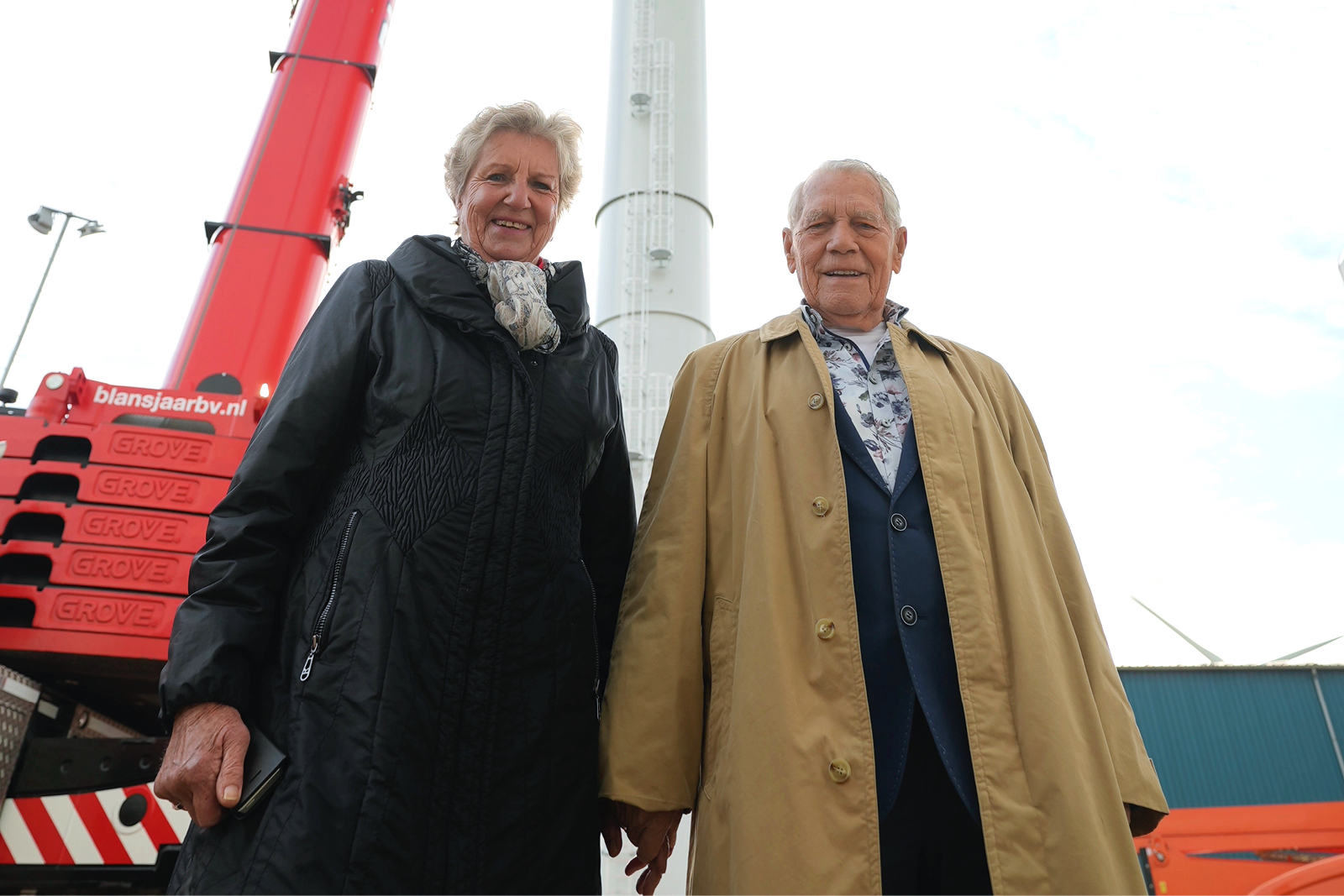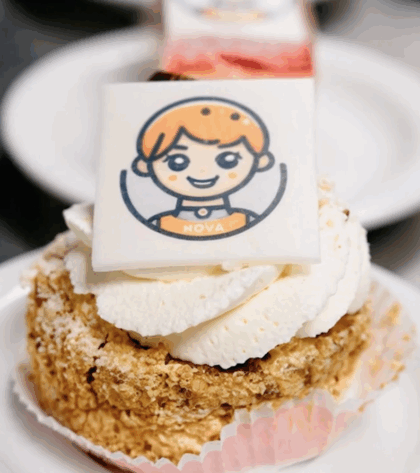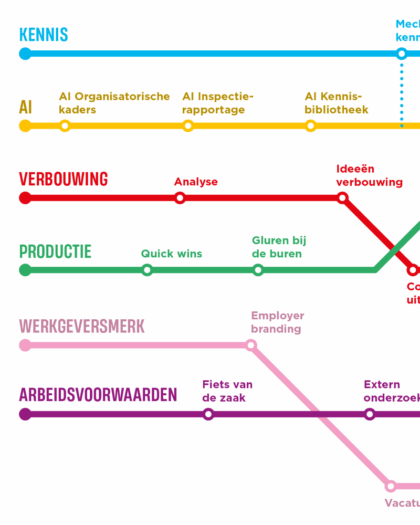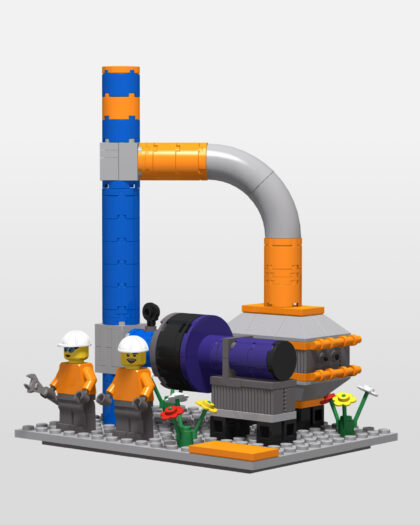It all started 50 years ago… or actually even earlier
The official story of Bos Nieuwerkerk begins on 13 May 1973, with the founding of Isolatie en Handelsonderneming Bos Nieuwerkerk B.V. by Leen Goedegebuure and Peter Bos. But unofficially, the roots go back further. Together with Ria Goedegebuure—Martine’s mother—we look back on a past that, without exaggeration, could be described as turbulent.

Ria and Leen Goedegebuure
Ria, can you tell us something about how it all started?
“I’m the daughter of a grocer who, quite remarkably for the late 1950s in Nieuwerkerk aan den IJssel, was allowed to attend the MULO in Rotterdam. Most kids went to work at fifteen, but I studied languages and earned my business and typing diplomas. Leen was a welder when we met. Together with a business partner, he started his own company. They focused on greenhouse heating, and later domestic heating. With natural gas discovered in Slochteren, greenhouses and homes began switching to gas for heating. Leen took a course in radiators and cast-iron boilers and began installing convector heating systems. But during the first cold winter, it turned out those convectors had pipes that were too narrow—they couldn’t deliver enough warmth. We held the manufacturer accountable since we had followed their installation instructions. Still, we lost the court case. In 1968, both the factory and our business went bankrupt. I was pregnant with Martine at the time.”
So you had to start all over again?
“Yes, we lost everything—both personally and professionally. I went to work for my father, doing the bookkeeping for his supermarket. Leen shifted his focus to greenhouse heating. A company in Kwintsheul was selling steel chimneys to growers. Their old brick chimneys couldn’t handle the exhaust from natural gas—they needed metal ones. Leen was asked to make them, so he learned how. But four years later, that company went bankrupt too. That’s when Leen decided to start a new business again, together with Peter Bos, whom he’d worked with before. Since ‘Goedegebuure’ was considered a bit of a mouthful, they chose the name Bos Nieuwerkerk. And because I had the required business diploma, we were allowed to start the new company.”
Keeping control of the finances
“Bos Nieuwerkerk grew rapidly. We built the biggest chimney we’d ever made—20 metres tall. I handled the bookkeeping and finances. Leen was used to making verbal agreements, but I wanted more control. If he promised someone a raise or struck a deal with a supplier, I’d say, ‘Let’s put that in writing right now.’ That’s how we became more professional over time—and in that way, we complemented each other perfectly.”
The kitchen as the company canteen
“We operated out of an old farmhouse, with several barns for storage. Leen was welding and insulating in the workshop, with lots of help from his father. My mother-in-law also helped out. Leen’s parents lived on our property, so our children—Eddy, Martine, and Walter—had a great set of grandparents looking after them. My mother-in-law would make coffee for all the employees. First in the kitchen, later in the canteen. When people worked overtime in the evenings, they’d come into our living room for coffee—strictly at eight o’clock. Watching the news was important to Leen.”
Leen saw opportunities beyond greenhouse farming—in utility and industry. And he spotted potential abroad.
Expansion into new markets
“Our chimneys were selling well, but competition was increasing. Leen saw new opportunities—beyond greenhouse horticulture—specifically in the utility and industrial sectors, and even abroad. We also started a second company with a third partner under the name BGS Holland (Bos, Goedegebuure, Stassen). This company produced loading spouts for dust-free bulk loading. Eddy and Walter would later play important roles in that business. Peter Bos wasn’t a fan of all these new directions, so Leen and I decided to buy him out. We succeeded—and from then on, it was just the two of us running the company, with no outside partners.”
A move that almost didn’t happen
“As our company grew, so did the chimneys—both in height and diameter. We started delivering chimneys to major clients like the Dutch Central Bank, Palace Het Loo, and Niemeyer. We also began receiving more international orders. Eventually, our site on Albert van ’t Hartweg became too small. One day Leen came home and said, ‘We’re moving.’ I nearly fell off the couch. I thought we finally had some peace and financial security—but a new adventure had begun. Leen bought land along the A20 and made plans to build a new facility. But a nearby neighbour objected. It turned into a court case, which we fortunately won—with support from Mayor Van der Goot. Just two weeks after we moved in, Leen had a heart attack. That was in 1991.”
Martine stepped in to help
Martine was studying Small Business at HEAO in Haarlem. When Leen fell ill, she came to help us—working on our ISO certification, among other things. When Leen started feeling better, he got involved again and saw an opportunity in former East Germany. The Berlin Wall had just come down, and we already had some customers in the region. As part of her graduation, Martine researched the potential of opening a branch in Leipzig. This led to the founding of a new sales location: Bos Leipzig. By late 1994, Leen had to step back again due to his health. That’s when I lost my business partner. Fortunately, Martine took on more and more responsibility. It was always clear to us that Martine would eventually take over the company. Leen and I never had any doubts, and luckily, there was never any conflict between the children about it.”
Transferring the shares
The 1990s were tough years, with several global crises that impacted us too. But one big highlight was in 1996, when Leen was knighted in the Order of Orange-Nassau. By then, Leen was only involved in a supporting role, and we both felt we didn’t have the energy to take the business into a new phase. In 1997, it was the right time to sell our shares to the children. Martine became managing director. Leen stayed involved until early 2000. But when he suffered another heart attack while on holiday in Thailand, he stepped away for good. I stayed on for five more years.”
Martine kept growing
“By then, Martine was married and running the business. She also studied at Nyenrode, and I saw how her confidence grew. When she got divorced, she stood on her own—but she kept leading the company with strength. The first major project she landed during the economic crisis felt like a real victory. It was wonderful to see her succeed—and keep growing.”
Investing is not the same as buying
“Leen used to say to her, ‘Buy the neighbour’s building, buy an extra warehouse, buy land. That’s how you grow.’ But Martine prefers to invest in people, in networks, in knowledge, in new products and innovation. She makes sure she has people around her to talk things through. Right now, she’s very focused on sustainable entrepreneurship and climate issues. She sees what’s needed. The acquisition of Heat Matrix took a lot of effort—she was fully committed. Many people advised her against it, but she saw the potential of combining Heat Matrix with Bos Nieuwerkerk. And now, everyone agrees she was right. I’m so happy Leen got to see that.”
Business is business—but business is people first
“I love how Martine leads the company with the same philosophy Leen and I held: business is business, but business is people first. That mindset came from my father, Jan van Driel. And it’s been a guiding principle in our company ever since the beginning.”


